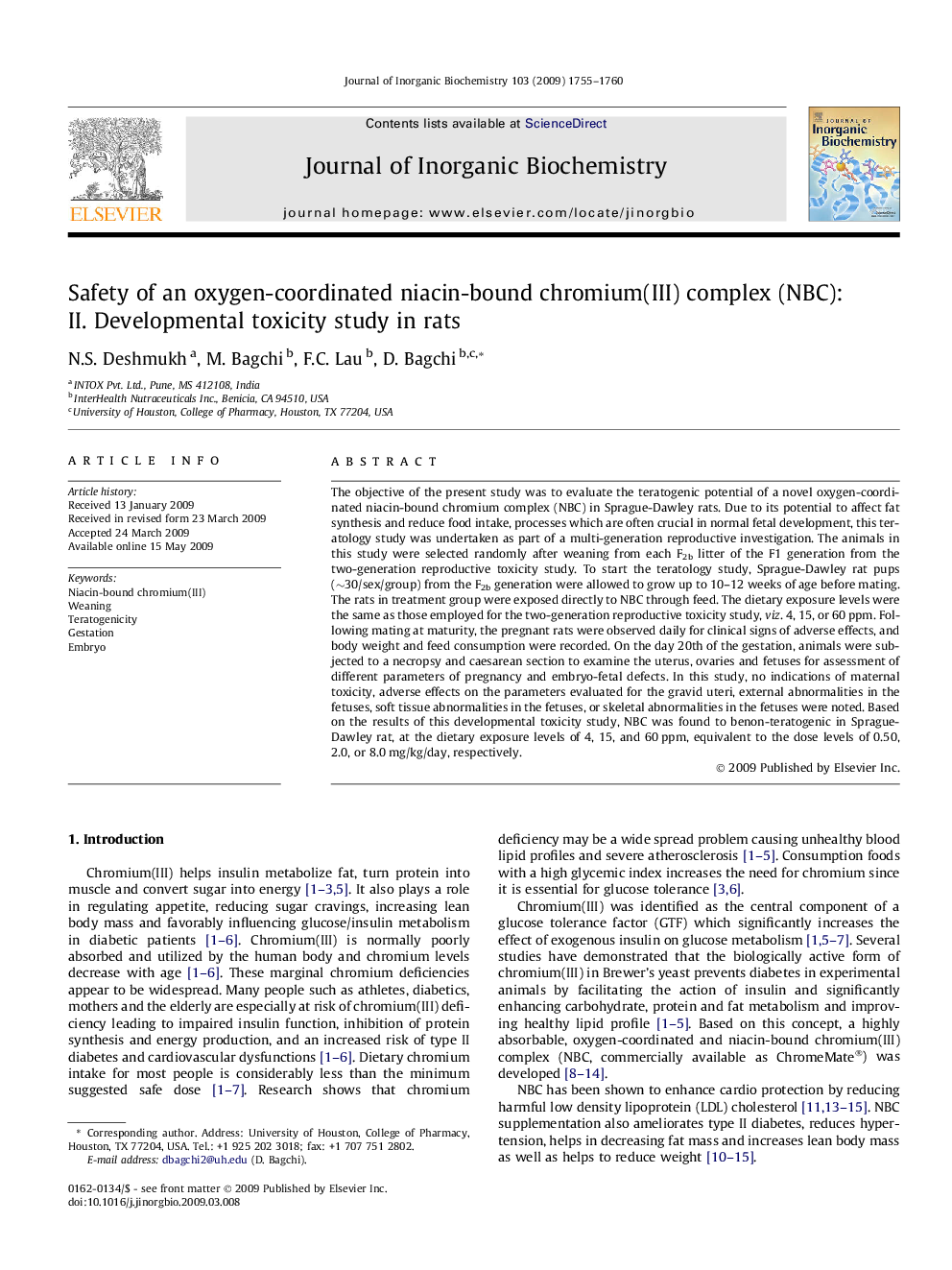| Article ID | Journal | Published Year | Pages | File Type |
|---|---|---|---|---|
| 1316226 | Journal of Inorganic Biochemistry | 2009 | 6 Pages |
Abstract
The objective of the present study was to evaluate the teratogenic potential of a novel oxygen-coordinated niacin-bound chromium complex (NBC) in Sprague-Dawley rats. Due to its potential to affect fat synthesis and reduce food intake, processes which are often crucial in normal fetal development, this teratology study was undertaken as part of a multi-generation reproductive investigation. The animals in this study were selected randomly after weaning from each F2b litter of the F1 generation from the two-generation reproductive toxicity study. To start the teratology study, Sprague-Dawley rat pups (â¼30/sex/group) from the F2b generation were allowed to grow up to 10-12Â weeks of age before mating. The rats in treatment group were exposed directly to NBC through feed. The dietary exposure levels were the same as those employed for the two-generation reproductive toxicity study, viz. 4, 15, or 60Â ppm. Following mating at maturity, the pregnant rats were observed daily for clinical signs of adverse effects, and body weight and feed consumption were recorded. On the day 20th of the gestation, animals were subjected to a necropsy and caesarean section to examine the uterus, ovaries and fetuses for assessment of different parameters of pregnancy and embryo-fetal defects. In this study, no indications of maternal toxicity, adverse effects on the parameters evaluated for the gravid uteri, external abnormalities in the fetuses, soft tissue abnormalities in the fetuses, or skeletal abnormalities in the fetuses were noted. Based on the results of this developmental toxicity study, NBC was found to benon-teratogenic in Sprague-Dawley rat, at the dietary exposure levels of 4, 15, and 60Â ppm, equivalent to the dose levels of 0.50, 2.0, or 8.0Â mg/kg/day, respectively.
Keywords
Related Topics
Physical Sciences and Engineering
Chemistry
Inorganic Chemistry
Authors
N.S. Deshmukh, M. Bagchi, F.C. Lau, D. Bagchi,
